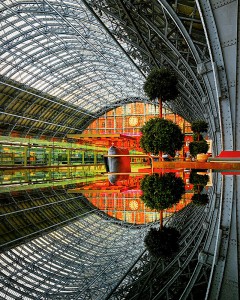With photography using smartphones showing continued growth, and the features of phone cameras being the main focus of advertising campaigns to differentiate between brands, this presentation by Jeanette Lendon was both opportune and topical.
Jeanette starter out a teacher and developed her love of photography through training with several photographers and working in the corporate/commercial photography sector before setting up her own company expressly focused on smartphone photography. She no longer owned a DSLR camera and started the Zoom talk by showing a range of images taken on various smartphone models. From there she shared a multitude of tips and tricks of taking creative photos with your smartphone. Adjusting exposure manually, slow camera focusing movements and minimal reliance of the camera’s zoom were key factors to improve results. Reflections using shiny surfaces and puddles featured heavily in her image collection and often involved getting the phone wet.
Snapseed was her preferred photo-editing app and its wide ranging capabilities were fully demonstrated using a bird of prey image. Photo Retouch was also mentioned as a complementary photo-editing tool and details of camera accessories such as selfie sticks/tripod and detachable lenses were also provided.
Most of us never let their phone leave their side and hopefully the new tricks that Jeanette showed will help us all make our phone images more creative.

